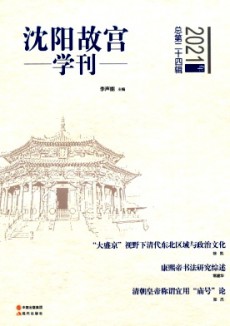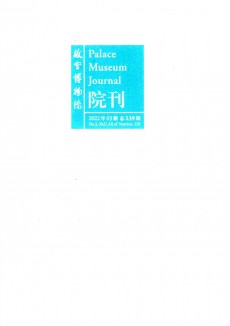故宮導游詞大全11篇
時間:2022-10-26 13:54:27緒論:寫作既是個人情感的抒發,也是對學術真理的探索,歡迎閱讀由發表云整理的11篇故宮導游詞范文,希望它們能為您的寫作提供參考和啟發。

篇(1)
故宮博物院,又名紫禁城,位于北京市中心,今天人們稱它為故宮。它玲瓏剔透,造型別致,是中國古建筑中的杰作。
游客們,現在我們來到了太和殿。太和殿為故宮三大殿之首,建在5米高的漢白玉臺基上,臺基四周矗立著雕龍石柱。走近太和殿,您就會發現皇后居住的地方,里面都是龍椅、龍椅還有瀝粉金漆的龍柱。
游客們,我們繼續往前走,現在來到的是中和殿,中和殿在太和殿之后,是故宮三大殿之一。該殿是一座單攢尖頂的方形殿。黃琉璃瓦四角攢尖頂,是皇上生活的地方。
再往里走就是保和殿,保和殿位于中和殿之后,是故宮三大殿之尾。保和殿東西兩側的房子現該為歷代藝術陳列館,陳列有從原始社會到清代月六千年的中華藝術瑰寶。
再向縱深行進就是御花園,占地面積一萬一千平方米,以欽安殿為中心,是皇上的后花園。
各位游客,我們今天的游覽就要結束了。非常高興能和大家度過這段美好的時光。對我今天的導游有什么建議或要求,請提出寶貴意見,我一定盡力改正。祝大家玩的愉快。謝謝!
北京故宮導游詞400習(二)
各位游客大家好,很高興成為你們的導游,我叫***,大家叫我陳導或小安都可以,我會盡自己全力為你們服務。
故宮位于北京市城區中心,是明、清兩代的皇宮,是當今世界上現存規模最大、建筑最雄偉、保存最完整的古代皇家宮殿。故宮又叫紫禁城。紫禁城是中國五個多世紀以來的最高權力中心,它以園林景觀和容納了家具及工藝品的9000個房間的龐大建筑群,成為明清時代中國文明無價的歷史見證。1987年,北京故宮被聯合國教科文組織列入《世界遺產名錄》。
北京故宮有很多古老的殿,有太和殿、中和殿、保和殿……
現在我們來到了故宮中最重要的院落--——太和殿及其廣場,這里就是皇家舉行盛大典禮的地方。太和殿象征皇權的至高無上,太和殿俗稱金鑾殿,是我國現存木結構大殿的杰出典范之作。太和殿始建于公元1420年,當時叫奉天殿。后來,該叫皇極殿。清順治皇帝登基后,重修三大殿,并將皇極殿改為太和殿。
篇(2)
大家好!首先請允許我代表沈陽市全體市民對各位的到來表示熱烈歡迎!今天我為大家介紹的就是沈陽的風景名勝之一的“沈陽故宮”。
沈陽故宮占地6萬多平方米,有樓臺殿閣各式建筑70余座,由20多個院落組成,總計房屋300多間。故宮按自然布局分為中路、東路和西路三部分。
中路:是太宗皇太極時期的大內宮闕。南端是大清門,也是故宮的正門。向北依次是崇政殿、鳳凰褸、清寧宮,它們都排列在一條中軸線上,兩側還有一些對稱式的附屬建筑。
大清門是日常朝會時文武大臣侯朝的地方,也是清太宗接受群臣謝恩之處。明朝著名將領洪承疇降清后,就從此門進入,受到皇太極的接見。大清門東側這處建筑叫祖廟,祖廟是愛新覺羅家族祭祀祖先的地方,因是天子的祖廟也稱“太廟”。
崇政殿前,東西各有五間廂樓,東為飛龍閣,西為翔鳳閣。殿后是一個院落,院正北有一座高約4米的高臺,臺上是皇太極極其后妃的寢區。沿臺階走上去便是一座金碧輝煌的高樓——鳳凰樓。它的原名叫翔鳳樓,直到1743年才有鳳凰樓之稱。鳳凰樓是清寧宮的門戶,也是皇帝策劃軍政大事和宴筵之所。它與崇政殿同期建成,康熙二十年重修。樓為三層,是三滴水式建筑。每層深廣各三間,周圍有回廊,下層的門洞是聯絡臺上臺下的道。風凰樓既是后宮的大門,又是整個宮殿建筑的制高點。在樓上觀看日出,極為美妙。所以“鳳樓曉日”、“鳳樓觀塔”是沈城著名的景觀。鳳凰樓正門上額的“紫氣東來”金字橫匾是乾隆皇帝的御筆。
清寧宮兩側是東西配宮,東配宮有關雎宮、衍慶宮;西配宮有麟趾宮和永福宮。東西配宮均為皇太極和妃子們居住之所。清寧宮西北角有一根由地面壘起,低于屋背的煙囪,人們從正面是看不見的。從清寧宮這一系列建筑中,我們可以發現沈陽故宮的兩大建筑特點:一是保存了濃厚的滿族特色即口袋房、萬字炕、煙囪豎在地面上。二是宮高殿低,清寧宮及其四所配宮均高于皇帝議政的崇政殿和東路的大政殿。這是因為清朝奪取政權前,滿族是一個牧獵民族,受生活習慣的影響,把居住的地方建在高處,以防野獸和洪水的侵襲。這與北京故宮恰好相反。
清寧宮高臺之后是“后苑”,也叫“御花園”,內有碾磨房、二十八間倉、后宰門等建筑,是皇帝膳食的供給區。并有地下窨道與清寧宮相通。
在崇政殿、清寧宮高臺兩側有“東所”、“西所”。東所由南往北依次是頤和殿、介祉宮、敬典閣等。東所是東巡時皇帝后妃給太后請安之處,也皇太后的寢宮和存放實錄、玉牒之處;西所由南往北依次是迪光殿、保極殿、繼恩齋和崇謨閣等。西所是東巡時皇帝、后妃及子女居住的地方和存放《圣訓》、《滿文老檔》的地方。崇謨閣的建筑形式是別具一格的,它為卷棚式建筑,是在清乾隆年間增建的。]
東路是以大政殿為主體,兩側輔以方亭十座,稱“十王亭”。大政殿建于努爾哈赤時期,是故宮最早期八角重檐大木架亭子式建筑。大政殿下是高約1。5米的須彌座式臺基,周圍繞以雕刻精細的荷葉凈瓶青石雕。殿身八面均有“斧頭眼”式隔扇門,內外排柱40根,正門前有雙龍蟠柱。殿頂是十六道五彩琉璃脊,正中是寶瓶火焰珠。殿內有精致的斗拱、藻井天花,梁架上用“和璽”彩繪,上有黃琉璃瓦綠剪邊的頂蓋。整個建筑顯示出極強的美感和莊嚴秀麗的裝飾藝術情趣。大政殿是皇帝舉行大型慶典的地方,1643年清世祖福臨在此即位。
大政殿前,正中是寬闊的甬道,兩側以八字形排列著十座方亭,這就是“十王亭”。從北至南,東邊是左翼王亭、正黃旗亭、正紅旗亭、鑲藍旗亭、正白旗亭;西邊是右翼王亭、鑲黃旗亭、鑲紅旗亭、正藍旗亭、鑲白旗亭。這是當年八旗首領固山額真和左右統轄八旗的親王貝勒辦公的地方。八旗制度在清王朝的軍事政治及社會制度,民事管理等等很多方面都占有極為重要的地位,發揮著巨大的作用。大政殿與十王亭構成了一組亭子式院落建筑,它是清入關前八旗制度在宮殿建筑上的反映。設計者從局部建筑直至整體布局,處處突出“八”字。這種把軍政制度巧妙地融合在建筑藝術中的做法,真可算是構思獨特、別具匠心。
沈陽故宮導游詞二
游客朋友們大家好,首先歡迎大家的到來,我叫王格申,是你們的導游,大家可以叫我王導,年長的游客們也可以直接稱呼我小王,好了,先給大家講講我們的行程,我們第一個要去的地方就是我們的沈陽故宮。
說道故宮,大家肯低昂想到的都是北京故宮,啟示不用到北京也能看到故宮的,沒錯那就是沈陽故宮,沈陽故宮是我國僅存的兩大宮殿建筑群之一,另外一個不用我多說大家應該都知道是哪一個了吧,沈陽故宮占地6萬多平方米,宮內建筑物保存完好。
現在大家就在沈陽故宮的門口,大家都看到了它的規模比占地72萬平方米的北京故宮要小得多,但是,它在建筑上有自己的特色,這些就需要有顆朋友們自己去體會品味了,這里現在是沈陽最重要的游覽點。
篇(3)
故宮平面呈長方形,南北長960米,東西寬750米,總面積有72萬平方萬米。整座紫禁城被寬52米的護城河所環繞,城墻高10米,可謂是"城高池寬".
篇(4)
好了,北京故宮我們已經游覽完了,現在是自由活動時間,大家可以解散,但要注意以下幾點:
1.不準破壞文物.在墻上亂圖亂畫.
篇(5)
請大家快跟我來,這就是故宮的入口,也就是午門,最中間的一個門是皇帝走的,它左右兩邊的門是朝廷官員走的,最邊上的兩個門是地方官僚、學士以及百姓走的。
篇(6)
各位先生,各位女士,我代表中國國際旅行社歡迎大家旅游觀光,預祝大家旅行愉快身體健康。我叫,是中國國際旅行社的導游員,今天我們要參觀游覽的是我們中華人民共和國的首都北京。下面請聽我向諸位做個介紹:北京有天安門、地安門、和平門、宣武門、東便門、西便門、東直門、西直門、廣安門、復興門、阜城門、得盛門、安定門、朝陽門、建國門、崇文門、廣渠門、永定門。
主要繁華商業區有:天橋、朱市口、前門大柵欄、王府井、東單、西單、東四、西四、古樓。如果您想上哪請向我提出我都可以帶路。
我還可以帶大家去游覽:北海、頤和園、天壇、動物園、陶然亭、紫竹院、中山公園、文化宮。香山碧云寺、西山處。看看周口店的古猿人,十三陵的地下宮殿,長城八達嶺、密云大水庫、故宮博物館、再看看雍合宮、白塔寺、清真寺、大鐘寺。瞧瞧世界上最大的鐘,凈重42噸。您看那邊,所有羅漢都有位置,唯獨濟公沒地兒呆,在屋梁上趴著的羅漢堂。
北京總讓您處處感到民族智慧的結晶,到處閃爍著人類文明的火花!好,我不多說了,還是請各位親自到北京各處走一走吧,請!
篇(7)
wearenowgoingtopayavisittoaplaceofspecialinterest.thisscenicspotislocatedatthecenterofbeijingandischaracterizedbythousandsofpalatialarchitecturesandpurplewallsaswellasyellowglazedtileroofs-itissimplyaseaofpalaces.thisistheworld–famouswonder–thepalacemuseum.
thepalacemuseumhasservedastheroyalresidenceduringthemingandqingdynasties.itwasherethatatotalof24monarchsascendedthethroneandwieldedpowerforsome500years.thepalacemuseum,asthemostbeautifulspotofinterestthroughoutbeijing,isuniqueforitslocation:tothenorthwestisbeihai(northsea)park,famousforitswhitepagodaandripplinglake;tothewestisthezhongnahai(centralandsouthsea);totheeastliesthethewangfujingshoppingstreet;andtothenorthidjinshanpark.standinginthewanchun(everlastingspring)pavilionatthetopofjingshan(charcoalhill)park,youoverlooktheskylineofthepalacemuseum.atthesouthernendofthepalaceistian`anmen(gateofheavenlypeace)andthefamoussquarenamedafterit.thisisthesymbolofthepeople`srepublicofchina.
aworld-famoushistoricalsite,thepalacemuseumisontheworldheritagelistofunescoandisanembodimentoforientalcivilization.
thepalacemuseumisrectangularinshape,960meterslongfromnorthtosouthand750meterswidefromeasttowest,coveringaspaceof720,000squaremetersofwhich150,000isbuildingarea.ithas9000-strongroomsinit.accordingtolegendthereare9999.5room-unitsinall.thewholecompoundisenclosedbya10-meter-hignwallandisaccessedthroughfourentrances,namely,themeridiangateinthesouth,thegateofmilitaryprowessinthenorth,donghua(easternflowery)gateinthenorth,donghua(easternflowery)gateintheeastandxihua(westernflowery)gateinthewest.oneachcornerthereisaturretconsistedof9roofbeams,18pillarsand72ridge.encirclingthecompoundthereisa3,800-meter-longand52meter-widemoat,makingthepalacemuseumaself-defensivecity-within-acity.
thepalacemuseumwasmadeacenterofruleduringthemingdynastybyzhundi,thefourthsonofthefoundingemperorzhuyuanzhang.thewholecomplexstraddlesonan8-kilometers-longcentralaxisthatstretchesfromyongding(foreverstable)gateinthesouthtogulou(drumtower)inthenorth.prominencewasgiventotheroyalpowerbyputtingthe“threemainfronthalls”and“threebackhalls”ontheaxiswhilearrangeothersubsidiarystructurearoundthem.theconstructionofthepalacemuseuminvolvedmanpowerandresourcesacrosschina.forexample,thebrickslaidinthehalls,knownas“goldbrick,”underwentcomplex,two–dozenprocesses.asthefinaltouch,thefiredbricksweredippedinchinesewoodoil.involvingcomplicatedprocessesandhighcost,thesebrickarecalled“goldenbricks.”thepalacemuseumservesasalivingembodimentofgoodtraditionandstylesuniquetochina`sancientarchitecture.itreflectstothefulltheingenuityandcreativityofthechineseworkingpeople.acarefullypreservedandcompletegroupofroyalresidences,thepalacemuseumisaprominenthistoricalandtouristsite.
whatwearenowapproachingisthemainentrancetothepalacemuseum-themeridiangate,whichischaracterizedbyredwalls,yellowglazed–tileroofsandupturnedeaves.ontopofthiswalls,yellowglazed-tileroofsandupturnedeaves.ontopofthismagnificentbuilding,therestandfiveloftyhallswithamainhallinthecenter.themainhallisroofedbymultipleeavesandcoversaspaceof9room-units.itisflankedbytwowingsoneachside.thewingsaresquareinshape,completewithmultipleandfouredgedeavesandpinnacles.allofthesestructuresareconnectedbyacolonnade.becausethesehallsresembleasoaringbird,itwasalsoknowaswufenglou(five-phoenixtower).insidethemainhallthereisathrone.drumsandbellswerestoredinthewings.whenevertheemperorpresidedovergrandceremoniesorobservedritesinthehallofupremeharmony,drums,bellsandgongswouldbestrucktomarktheoccasion.
asthelegendgoes,themeridiangateusedtobeaplacewherecondemnedrankingofficialswouldbeexecuted.thisnottrue.however,floggingwascarriedoutherebythemingemperors,ifacourtierfallsafouloftheemperor,hewouldbestrippedofhiscourtdressandfloggingwithastick.atonepointthepunishmentbecamesoharshthatatotalof11peoplediedfromfatalwoundonasingleoccasion.ontheotherhand,thisbuildingwasalsousedtoobserveimportantoccasionslikethetraditionalchineselanternfestival(15thdayofthefirstlunarmonth).ontheseoccasions,chineselanternswouldbehangedandsumptuousbanquetswouldbegiveninhonourofthewholecourtofministersandotherrankingofficials.
uponenteringthemeridiangatewebeganourtourofthepalacemuseum.theriverfoowinginfrontofusisknownasjinshuihe(goldenwaterriver)andthefivemarblesbridgesspanningitareknownastheinnergoldenwaterbridges.theoninthemiddlewasusedexclusivebytheemperoranditsbanisterswerecarvedwithdragonandphoenixdesigns.thebridgesflankingtheimperialonewerereservedforprincesandotherroyalmembers.therestwereusedbypalatines.asidefromdecoration,thegoldenwaterriverwasalsodugasprecautionagainstfire.mostofthestructureswithinthepalacemuseumaremadeofwood.whatismore,accordingtoancientchinesecosmology,thesouthistheabodeoffire,sothisbrookwasdugonthesoutherntipofthepalace.inthisway,thepalacemuseumreflectstraditionalchineseculture.
thisbuildingiscalledthegateofsupremeharmony.intheforegroundstandtwobronzelions.cananybodytellwhichismaleandwhichisfemale?theoneontheeastplayingwithaballismale,symbolizingpoweranduniversalunity.theotheronthewestwithacubcuddlingunderneathitsclawisfemale?theoneontheeastplayingwithaballismale,symbolizingpoweranduniversalunity.theotheronthewestwithacubcuddlingunderneathitsclawisfemale,representingprosperitytheendlesssuccession.alayoutofthepalacemuseumispostedbytheentrance.fromit,youcanseethatthepalacemuseumhastwomainparts:theforecourtandtheinnercourt.thethreemainhallsconstitutethemainstayoftheforecourt,anditwasherethattheemperorannounceddecisionsandobservedrites.behindtheforecourtthereistheinnercourt,consistingofmajorhallsandtheimperialgarden.itwaswheretheemperorattendedstateaffairs,livedandenjoyedhisluxuriouslife.theexhibitionsystemofthepalacemuseuminvolveshistoricalcourtrelicsandarticlesofancientartandculture.thepalacemuseumhousesnearlyonemillionarticlesofraretreasure,oronesixthofthetotalnumberinallofchina`smuseums.therearethethreemainhallsofthepalacemuseum,builtonatriplemarbleterrace.sincemostofchina`sarchitectureismadeofwood,thebuildingscannotbetootall.togaintheheightofthearchitecture,ingeniousancientartisansbuiltthehallonagiganticstoneterrace.itisalsotothisendthatnotasingleplantwasgrowninthesquare.onstairwaysoftriplemarbleterracethereare18bronzetripods.theverandahisflankedbybronzetortoisesandcranes,whichservedassymbolsoflongevity.ontheeastisasundial,anancienttimepiece.onthewestthereisagrainmeasuresuggestingthattheemperorwasjustandequitable.
inthefrontandoneachflank,thereisapairofgiltbronzevats(caldrons)moldedduringthereignofemperorqianlongoftheqingdynasty.eachoftheseweights2tonsandisfilledwithwaterasaprecautionintheeventofafire.thestructureintheverymiddleisthehallofsupremeharmony,alsoknownasthethronehall.itis64metersinwidthandis38metersfromentrancetorear.withterraceexclusive,thehallis26.92metersinheightandis35.03metersinall.coveringandareaof2,377squaremeters,thehallofsupremeharmonyischina`slargestexitingwoodenstructure.thehallissupportedby6thick,roundpillarscarvedinadesignofcoilingdragons.astheholiestplaceinthehall,theceilingandcoloredpatternsweremadeofthefinestmaterialavailableatthattime.thethronewasplacedonaterraceandisflankedbystatuesofelephants,luduan(aunicornwhichcouldtravel18,000kilometersadayandunderstandalllanguages),cranesandincensebarrels.overthethronethereisthecaisson,orcoveredceiling,whichconsistsofacoilingdragonplayingwithaballinitsmouth.thisballisknownasxuanyuanmirror,andwassupposedlymadebyachineseemperorofremotetimestoserveasareminderthattheerulerstofollowwerehishereditaryheirs.thethroneismadeofnanmuandpaintedingold.magnificentlybuiltandluxuriouslydecorated,thishalldidnotserveasaplaceinwhichtheemperorattendedtodailyaffairs.heusedhishallformajoreventssuchashisbirthday,conferraloftitleofempressordispatchofgeneralstowar.
behindthehallofsupremeharmony,theresitsthehallofcompleteharmony.thisstructureissquareinshape.eachsideis24.15meters.thiswastheplacewheretheemperorrelaxedandgreetedhiscourtiersbeforeproceedingtothehallofsupremeharmonytoobserverites.thiswasalsotheplacewheretheemperorpreparedprayersorexaminedseedsandsowersbeforeheattendedancestralsacrificesorparticipatedinsnowingceremonies.agrandceremonywasalsoheldhereonceevery10yearsfortheemperortogenealogizetheroyalblood.therearetwosedanchairsondisplayinthehall.behindthehallofcompleteharmony,youwillseethehallofpreservingharmony,whichwasusedasaplacewhereimperialexaminationswereheld.theimperialexaminationwasthehignestlevelofcompetingformeritoriousappointmentunderthefeudalsystemdatingbacktothesuidynasty.china`slastimperialexaminationwasheldin1904duringthereignofemperorguangxuoftheqingdynasty.totherearofhallthereisamarblerampcarvedwithcloudanddragondesigns,thelargestofitskindinthewholecountry.itis16.57metersinlength,3.07metersinwidth,1.7metersthickandweighs250tons.itwasquarriedinfangshancountyinsuburbanbeijing.tobringthisgiantpieceofstonetobeijingpeoplepouredwaterontotheroadandappliedrollingblocksduringtheprocess.
wearenowstandingbeforethesquareofthehallofheavenpurity.itservedasadivideseparatingtheforecourtfromtheinnercourt.thisbuildingisknownasthegateofheavenlypurity.emperorqianlongheldcourthere.proceedingfurthernorth,youcanfindthreemainrearhalls,i.e.thehallofheavenlypurity.thehallofunionandpeaceandpalaceofearthlytranquility.thehallofheavenlypurityifflankedoneithersidebytwogatesnamedafterthesunandmoon.insidetheenclosurethereare12palacesandhallssymbolizingconstellations.alloftheotherbuildingsarecenteredaroundthepalaceofheavenlypurity,whichwasmeanttosuggestthatthemonarch`spowerwasendowedbyheaven.theempressandconcubineslivedintheinnercourt.
thehallofheavenlypuritywaswheretheemperorlivedandattendedtodailyaffairs.latertheemperormovedtoliveinthepalaceofmentalcultivation.lookingupyoucanseeaplaquebearingthechineseinscription“beopenandabove-board,”amanifestotocourtstruggle.behindtheplaqueastrongboxwasstoredcontainingawillbearingthenameofthewould–beroyalsuccessor.thisapproachofsecretlyselectingthenextemperorwasadoptedbyemperoryongzhengoftheqingdynasty.twocopiesofthewillwereprepared.onewasstashedbytheemperorinperson,theotherwasplacedinsidethestrongboxbehindtheplaque.afterthedeathoftheemperor,thetwocopieswouldbecomparedandsuccessorwouldbeannounced.itwasinthiswaythatemperorqianglongandothershaveascendedthethrone.
behindthehallofheavenlypurityyouwillseethehallofunionandpeace,whichisindenticaltothehallofcompleteharmony.itwastherethattheemperorreceivedcongratulationsandtributesfromimperialofficialsonmajorcalenderoccasions,atotalof25imperialsealsarestoredthere.inthehall,youwillseeaplaquewiththehandwritteninscriptionof“wewei,”exhortingtaoistdoctrines.
篇(8)
大家好!首先請允許我代表沈陽市全體市民對各位的到來表示熱烈歡迎!今天我為大家介紹的就是沈陽的風景名勝之一的沈陽故宮。
沈陽故宮占地6萬多平方米,有樓臺殿閣各式建筑70余座,由20多個院落組成,總計房屋300多間。故宮按自然布局分為中路、東路和西路三部分。
中路:是太宗皇太極時期的大內宮闕。南端是大清門,也是故宮的正門。向北依次是崇政殿、鳳凰褸、清寧宮,它們都排列在一條中軸線上,兩側還有一些對稱式的附屬建筑。
大清門是日常朝會時文武大臣侯朝的地方,也是清太宗接受群臣謝恩之處。明朝著名將領洪承疇降清后,就從此門進入,受到皇太極的接見。大清門東側這處建筑叫祖廟,祖廟是愛新覺羅家族祭祀祖先的地方,因是天子的祖廟也稱太廟。
崇政殿前,東西各有五間廂樓,東為飛龍閣,西為翔鳳閣。殿后是一個院落,院正北有一座高約4米的高臺,臺上是皇太極極其后妃的寢區。沿臺階走上去便是一座金碧輝煌的高樓鳳凰樓。它的原名叫翔鳳樓,直到1743年才有鳳凰樓之稱。鳳凰樓是清寧宮的門戶,也是皇帝策劃軍政大事和宴筵之所。它與崇政殿同期建成,康熙二十年重修。樓為三層,是三滴水式建筑。每層深廣各三間,周圍有回廊,下層的門洞是聯絡臺上臺下的道。風凰樓既是后宮的大門,又是整個宮殿建筑的制高點。在樓上觀看日出,極為美妙。所以鳳樓曉日、鳳樓觀塔是沈城著名的景觀。鳳凰樓正門上額的紫氣東來金字橫匾是乾隆皇帝的御筆。
清寧宮兩側是東西配宮,東配宮有關雎宮、衍慶宮;西配宮有麟趾宮和永福宮。東西配宮均為皇太極和妃子們居住之所。清寧宮西北角有一根由地面壘起,低于屋背的煙囪,人們從正面是看不見的。從清寧宮這一系列建筑中,我們可以發現沈陽故宮的兩大建筑特點:一是保存了濃厚的滿族特色即口袋房、萬字炕、煙囪豎在地面上。二是宮高殿低,清寧宮及其四所配宮均高于皇帝議政的崇政殿和東路的大政殿。這是因為清朝奪取政權前,滿族是一個牧獵民族,受生活習慣的影響,把居住的地方建在高處,以防野獸和洪水的侵襲。這與北京故宮恰好相反。
清寧宮高臺之后是后苑,也叫御花園,內有碾磨房、二十八間倉、后宰門等建筑,是皇帝膳食的供給區。并有地下窨道與清寧宮相通。
在崇政殿、清寧宮高臺兩側有東所、西所。東所由南往北依次是頤和殿、介祉宮、敬典閣等。東所是東巡時皇帝后妃給太后請安之處,也皇太后的寢宮和存放實錄、玉牒之處;西所由南往北依次是迪光殿、保極殿、繼恩齋和崇謨閣等。西所是東巡時皇帝、后妃及子女居住的地方和存放《圣訓》、《滿文老檔》的地方。崇謨閣的建筑形式是別具一格的,它為卷棚式建筑,是在清乾隆年間增建的。]
東路是以大政殿為主體,兩側輔以方亭十座,稱十王亭。大政殿建于努爾哈赤時期,是故宮最早期八角重檐大木架亭子式建筑。大政殿下是高約1。5米的須彌座式臺基,周圍繞以雕刻精細的荷葉凈瓶青石雕。殿身八面均有斧頭眼式隔扇門,內外排柱40根,正門前有雙龍蟠柱。殿頂是十六道五彩琉璃脊,正中是寶瓶火焰珠。殿內有精致的斗拱、藻井天花,梁架上用和璽彩繪,上有黃琉璃瓦綠剪邊的頂蓋。整個建筑顯示出極強的美感和莊嚴秀麗的裝飾藝術情趣。大政殿是皇帝舉行大型慶典的地方,1643年清世祖福臨在此即位。
大政殿前,正中是寬闊的甬道,兩側以八字形排列著十座方亭,這就是十王亭。從北至南,東邊是左翼王亭、正黃旗亭、正紅旗亭、鑲藍旗亭、正白旗亭;西邊是右翼王亭、鑲黃旗亭、鑲紅旗亭、正藍旗亭、鑲白旗亭。這是當年八旗首領固山額真和左右統轄八旗的親王貝勒辦公的地方。八旗制度在清王朝的軍事政治及社會制度,民事管理等等很多方面都占有極為重要的地位,發揮著巨大的作用。大政殿與十王亭構成了一組亭子式院落建筑,它是清入關前八旗制度在宮殿建筑上的反映。設計者從局部建筑直至整體布局,處處突出八字。這種把軍政制度巧妙地融合在建筑藝術中的做法,真可算是構思獨特、別具匠心。
沈陽故宮導游詞二 游客朋友們大家好,首先歡迎大家的到來,我叫王格申,是你們的導游,大家可以叫我王導,年長的游客們也可以直接稱呼我小王,好了,先給大家講講我們的行程,我們第一個要去的地方就是我們的沈陽故宮。
說道故宮,大家肯低昂想到的都是北京故宮,啟示不用到北京也能看到故宮的,沒錯那就是沈陽故宮,沈陽故宮是我國僅存的兩大宮殿建筑群之一,另外一個不用我多說大家應該都知道是哪一個了吧,沈陽故宮占地6萬多平方米,宮內建筑物保存完好。
現在大家就在沈陽故宮的門口,大家都看到了它的規模比占地72萬平方米的北京故宮要小得多,但是,它在建筑上有自己的特色,這些就需要有顆朋友們自己去體會品味了,這里現在是沈陽最重要的游覽點。
篇(9)
大家好!我姓賴,名叫喬,是當地的導游,大家可以叫我喬喬,很高興做大家的導游。這次旅游的地方是故宮,由我來當導游,希望大家能快樂地度過這段美好的時光。
故宮位于北京市區中心,是我國明清兩代的皇宮,我們一起去游覽游覽吧!
故宮,舊稱紫荊城。我國現存規模古代建筑群。看!還真漂亮,龍椅是不是很豪華?想不想上去坐一坐!哈哈,不行,只能拍照。
她始建于永樂四年至十八年(1406——1420)年,后經多次重建原有布局。占地面積七十二萬多平方米,建筑面積約十五萬平方米,屋宇九千余門余米,長約三公里,四腳矗立風格倚麗的角樓,墻外有寬五十二米的護城河。氣勢宏偉豪華,布局開闊對稱,內外裝飾壯麗輝煌。是我國古代建筑末年被列入《世界文化遺產名錄》。2004年,沈陽故宮,作為明清項目列入《世界遺產名錄》,是世界最大的宮殿。
篇(10)
歡迎大家到北京來作客,我叫方芳,大家可叫我方導。今天我將帶領各位去游覽世界聞名的故宮,希望我們能度過一段快樂的時光。
故宮是我國最大、最完整的皇宮,在世界上堪稱最為壯麗的古代建筑群,己有近600年的歷史。
故宮是我國明、清兩代24個皇帝的皇宮,故宮的建筑布局分為外朝和內廷。外朝是皇帝舉行大典和召見大臣的主要場所。其中建筑是太和殿、中和殿、保和殿這三大殿,文華殿和武英殿分立兩側。內廷是皇上處理日常政務和后宮嬪妃及幼年的皇子居住、游玩、奉神的地方。
故宮共有9000多間宮殿,雕梁畫棟,殿宇輝煌,極盡華麗威嚴。故宮是我國古代建筑大師和能工巧匠非凡技術和豐富相象力的結晶。如:太和殿中有72根支柱,其中6根支柱是鍍金的,上有金龍盤繞。透過欄桿往大殿里瞧,你們會瞧見大殿里金碧輝煌。寶座是鍍金的,扶手是鍍銀的,4個香爐是用香木做的,真是富麗堂皇。太和殿后是中和殿,中和殿是皇帝休息的地方。最讓你們驚嘆的是保和殿后的一塊石雕。石雕長16。57米,寬3。07米,厚1。7米,有200多噸重。上面雕著波濤洶涌的大海,騰云駕霧的飛龍。故宮真不愧為中國寶貴的文化遺產呀!
現在我給大家兩個小時的自由參觀時間。請大家面對我們祖先留下的這些文物時,要格外珍惜,小心,不要損壞,大家可以用照相機照下自己喜歡的部分。還有,除了照片,你什么也別帶走,除了身影,你什么也別留下。
我們該回去了,希望大家喜歡北京,有機會再來北京參觀其它20處文化遺產。
北京故宮導游詞作文二 大家好!歡迎游客們到故宮觀光游覽。今天,我將帶領大家游覽故宮,希望游客們能喜歡我!
游客們!故宮博物院是在明、清兩代皇宮紫禁城的基礎上建立的一座集古代建筑群、宮廷收藏、歷代文化藝術為一體的大型綜合性博物館。紫禁城占地面積約100多萬平方米,建筑面積約1萬平米。故宮里一共居住過24位皇帝,第一位是明代永樂皇帝朱棣,最后一位是清代宣統皇帝溥儀,統治全國長達491年。所以說故宮的歷史非常悠久呢!
游客們,請往上看,這就是午門,在古代,殺什么人都要在午門前殺呢!從午門進去,我們就可以看到內金水橋。從內金水橋過去,過一個太和門,就可以看到宮廷原狀陳列的太和殿、中和殿、保和殿,是皇帝聽政的地方,宏偉之極。從保和殿出來,過一個乾清門,就來到乾清宮、交泰殿和坤寧宮,傳說修故宮時,是為了能天下太平,才修的這三個地方呢。過了坤寧門,就是御花園,御花園里景色秀美,有許多奇形怪狀的石頭,遇到這些石頭時,記住留影紀念喔!
再過了順貞門和神武門,我們的故宮之游就結束了。回頭看看這雄偉的故宮,是不是有些舍不得呢?
北京故宮導游詞作文三 歡迎各位游客加入陽光之旅行列。我是這里的小小導游,現在,我帶領大家共同游覽,希望各位遵守秩序,不要擁擠,禁止照相。祝愿你們快樂地度過這美好時光!
明清的兩代皇宮,也叫紫禁城。它始建于1406年,距今已有600年了。經過多個朝代的建造現在這故宮是目前保存最完好的故宮,也是規模最大的古代宮殿建筑群。
我說完歷史,現在來說說它的布局吧。故宮南邊是午門,北邊是神武門,東邊是東華門,西邊是西華門,是結構精美的角樣。多面的城墻有10米多高,護城河寬52米,長800米,既壯觀有美麗。
文華殿是皇帝上早朝的地方。武英殿是皇帝吃飯、居住和會見大臣的地方。坤寧宮和乾清宮是皇帝、太后正式居住的地方,除了這些場所,還有后三宮和東西六宮。故宮在1961年被聯合國教科文組織認為世界文化遺產。
我的介紹完了,我相信大家對故宮也有些了解了吧。祝大家玩得開心!
北京故宮導游詞作文四 各位游客你們好!歡迎來到北京故宮觀光旅游,希望大家通過我的介紹,對北京故宮留下美好的印象,謝謝!
篇(11)
ladies and gentlemen:
i am pleased to serve as your guide today.
it is believed that the palace museum, or zi jin cheng (purple forbidden city), got its name from astronomy folklore, the ancient astronomers divided the constellations into groups and centered them around the ziwei yuan(north star). the constellation containing the north star was called the constellation of heavenly god and star itself was called the purple palace. because the emperor was supposedly the son of the heavenly gods, his central and dominant position would be further highlighted the use of the word purple in the name of his residence. in folklore, the term ”an eastern purple cloud is drifting” became a metaphor for auspicious events after a purple cloud was seen drifting eastward immediately before the arrival of an ancient philosopher, laozi, to the hanghu pass. here, purple is associated with auspicious developments. the word jin (forbidden) is self-explanatory as the imperial palace was heavily guarded and off-explanatory as the imperial palace was heavily guarded and off-limits to ordinary people.
the red and yellow used on the palace walls and roofs are also symbolic. red represents happiness, good fortune and wealth. yellow is the color of the earth on the loess plateau, the original home of the chinese people. yellow became an imperial color during the tang dynasty, when only members of the royal family were allowed to wear it and use it in their architecture.




